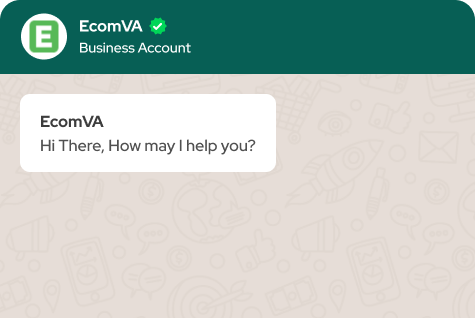What are the benefits of ecommerce content marketing?
When SEO standards mention content as king, they have always wanted to focus on the importance of content in building an online store. A strong content can make or break your ecommerce game, hence ecommerce store owners must focus on the content of their online stores. The content part plays a crucial role in enhancing the overall performance and success of an ecommerce online store. Well-crafted content can provide numerous benefits that contribute to improving customer engagement, driving traffic, boosting conversions, and building brand loyalty.
What is ecommerce content marketing?
The act of a business publishing and distributing information to increase product sales is the most basic definition of content marketing. This specific type of marketing encourages consumers to interact with products and services by utilizing a variety of content formats, including blogs, online videos, articles, and photos.
Here’s how content can help your ecommerce store:
1. Search Engine Optimization (SEO):
High-quality content, including product descriptions, category pages, blog posts, and guides, can incorporate relevant keywords and phrases. This helps improve your store’s visibility in search engine results, driving organic traffic to your site.
2. Product Descriptions:
Detailed and persuasive product descriptions provide potential buyers with essential information about products, helping them make informed purchasing decisions. Well-written descriptions can highlight features, benefits, and usage instructions, leading to higher conversions.
3. Educational Resources:
Content such as blog posts, how-to guides, and tutorials can position your store as an authority in your niche. These resources can educate customers about your products, industry trends, and best practices, creating trust and credibility.
4. Customer Engagement:
Engaging and informative content keeps visitors on your site longer. This increased dwell time can lead to better search engine rankings and a higher likelihood of visitors exploring and purchasing from your store.
5. Storytelling and Branding:
Content allows you to tell your brand’s story and values, helping customers connect with your brand on a personal level. Storytelling can differentiate your store from competitors and create a memorable brand identity.
6. User Experience:
Well-structured content enhances the user experience. Clear navigation, organized product categories, and informative content make it easier for customers to find what they’re looking for.
7. Cross-Selling and Upselling:
Content can be used strategically to suggest related products or accessories, encouraging customers to explore additional options and potentially increasing their order value.
8. Email Marketing:
Content-driven email campaigns, such as newsletters featuring new arrivals, promotions, and informative articles, can drive repeat business and keep customers engaged.
9. Social Media Promotion:
Shareable and engaging content can be shared on social media platforms, driving traffic back to your store and increasing brand visibility.
10. Customer Trust and Loyalty:
High-quality content helps establish trust and build long-term relationships with customers. Valuable resources and helpful information showcase your commitment to customer satisfaction.
11. Seasonal and Trend Marketing:
Content can be tailored to seasonal trends, holidays, or special occasions, helping you create timely promotions and capitalize on relevant events.
12. Feedback and Reviews:
Content can include customer reviews, testimonials, and user-generated content. Positive feedback builds social proof and reassures potential buyers.
13. Educational Marketing:
Use content to educate customers about your product offerings, helping them understand the value of what you’re selling and how it fits into their needs.
How to get started with content marketing for ecommerce?
Define your target audience
A target audience is a particular customer base that a business caters to with its products and services.
You need the following information to define your target audience:
Demographic data: Information about age, gender, place of residence, income level, etc.
Psychographic information: Preferences, thoughts, attitudes, etc.
Behavioral data: Previous users of the website, previous clients, etc.
The most popular option to find such data is Google Analytics. You can also provide survey forms on your website and pose questions to learn more about your visitors.
Research content ideas
The most relevant content will help you gain more visitors to your store. Here’s how you can find relevant content ideas:
Observe how other well-known companies in the field are promoting their products and services, or go through well-liked blog entries and social media pages to get ideas.
Think about the subjects that interest your target audiences and the best media to use to convey that information to them.
Brainstorm content topics with your coworkers or team and list down all the possible ideas.
Pick one form of content
Choose one type of content to promote on any one platform. The ideal option will vary depending on your specialized market, product, and consumer base.
Build product guides
The next thing you should do is build product guides. You can either create videos, blogs, or animations to attract customers.
Share customer reviews
Customer testimonials will allow you to improve the credibility of your store. Authentic testimonials will tell visitors that your products and services are worth investing in.
What metrics should you track for analyzing e-commerce content?
Page views
Page views are a fundamental metric to gauge the overall visibility and interest in your content. An increase in page views is a sign that people are finding your content interesting and visiting your e-commerce website. Examine the most viewed pages to see what content is popular and adjust your strategy accordingly.
Bounce rate
The percentage of visitors that leave a website after just viewing one page is the bounce rate. A high bounce rate might mean that visitors are not finding your content interesting or valuable. Analyze various pages’ bounce rates to find areas that might require work, such as content optimization or user experience improvements.
Conversion rate
Conversions are often the ultimate aim of any e-commerce content. To find out how successfully your content is influencing readers to take desired actions—like buying something, subscribing to a newsletter, or participating in some other significant way—track the conversion rate. Optimize content that contributes to higher conversion rates.
Time on page
Time on a page indicates how long visitors spend engaging with your content. A longer duration on the page implies that the audience is engaged with your material. Examine this measure to find themes or content types that your audience is interested in, then think about producing more of them.
Click-Through Rate (CTR)
CTR evaluates the percentage of people who clicked on a specific link, whether included in email campaigns or the content itself. A higher CTR is a sign of engaging content that encourages user interaction. Track CTR to determine which links or calls-to-action perform best.
How can you effectively distribute your e-commerce content?
Social media promotion
Use the popularity of social media sites to promote your e-commerce content. Make posts that are visually appealing and have catchy subtitles, and customize your strategy for each network. Use related hashtags and interact with your audience to improve discoverability.
Email marketing campaigns
Incorporate content in your email marketing strategies. Craft newsletters featuring new arrivals, exclusive promotions, and informative articles. Segment the list of your emails to deliver tailored content to different audience segments, increasing relevance and engagement.
Collaborations and partnerships
To increase the visibility of your content, collaborate with bloggers, influencers, and other businesses in your sector. By partnering with others, you can build a reputation and gain access to their audience. Make sure collaborations complement your brand and benefit both sides.
Content syndication
Explore content syndication platforms to amplify your reach. Syndication involves distributing your content to third-party websites, reaching a broader audience. Be strategic in choosing reputable platforms that align with your brand and target audience.
Paid advertising
Invest in targeted paid advertising to promote your e-commerce content. Utilizing platforms such as Google Ads and social media advertising, you can target particular demographics. Establish specific goals for your ads, such as raising brand recognition or boosting conversions, and adjust the content to meet those goals.
Influencer marketing
Collaborate with influencers who share relevance with your brand. Influencers can create authentic content that connects with their followers, driving traffic to your e-commerce site. Ensure that influencers have a genuine connection with your products for maximum impact.
Content SEO optimization
Optimize your e-commerce content for search engines to increase organic traffic. Conduct keyword research, use relevant meta tags, and create high-quality, shareable content. Consistent SEO efforts will contribute to improved search rankings and long-term visibility.
Community engagement
Actively engage with your audience to build a community around your brand. Promptly respond to comments, encourage user-generated content, and foster a sense of community. A loyal and engaged community can become advocates, naturally sharing and promoting your content.
Remember, the key to successful content management in ecommerce management is quality and relevance. Consistently providing value to your customers through various types of content can establish your store as a reliable source, improve your search rankings, and ultimately drive more conversions and revenue.
Hire An E-Commerce Virtual Assistant!
Finally Get A Dedicated Ecommerce Virtual Assistant To Conduct Your Task In The Best Possible Manner





